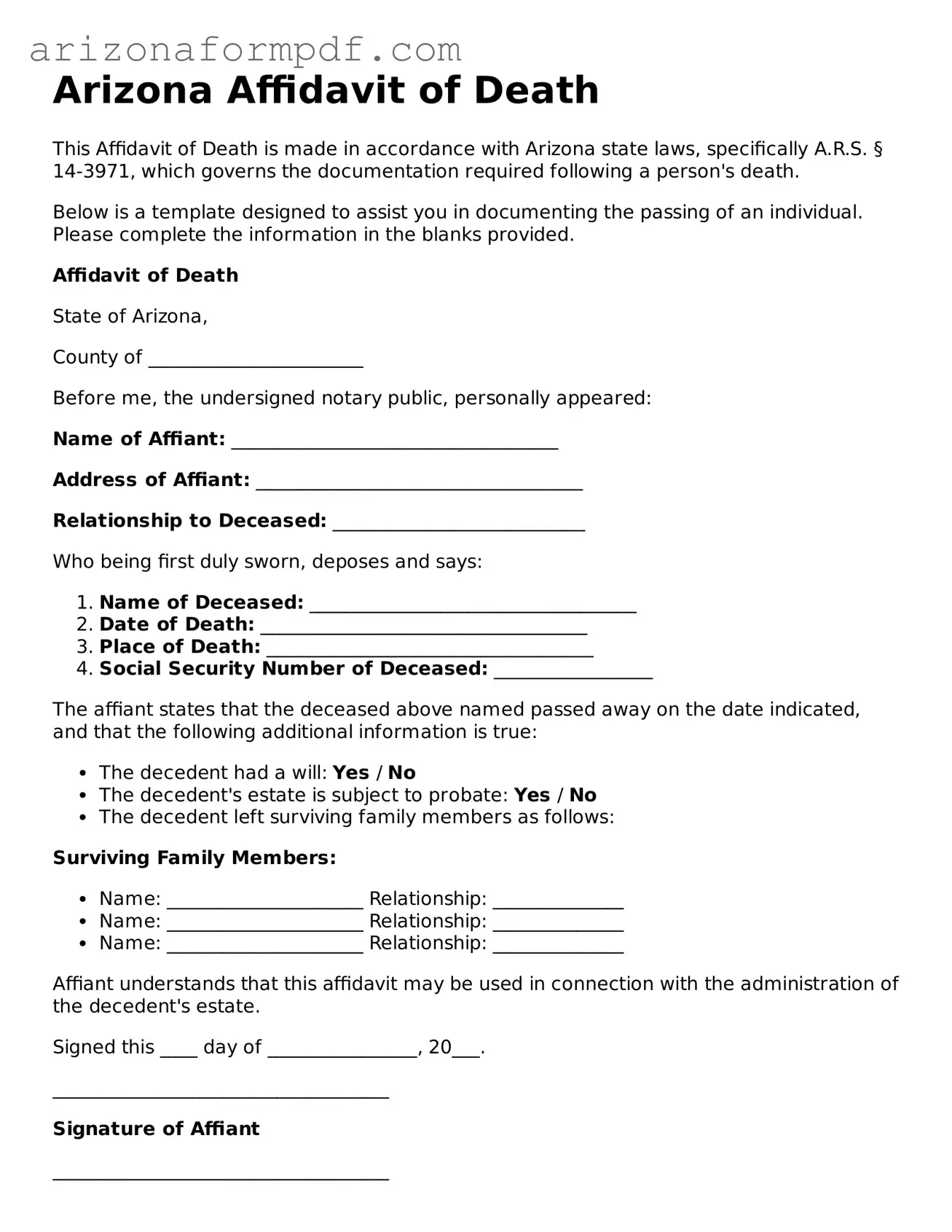Arizona Affidavit of Death
This Affidavit of Death is made in accordance with Arizona state laws, specifically A.R.S. § 14-3971, which governs the documentation required following a person's death.
Below is a template designed to assist you in documenting the passing of an individual. Please complete the information in the blanks provided.
Affidavit of Death
State of Arizona,
County of _______________________
Before me, the undersigned notary public, personally appeared:
Name of Affiant: ___________________________________
Address of Affiant: ___________________________________
Relationship to Deceased: ___________________________
Who being first duly sworn, deposes and says:
- Name of Deceased: ___________________________________
- Date of Death: ___________________________________
- Place of Death: ___________________________________
- Social Security Number of Deceased: _________________
The affiant states that the deceased above named passed away on the date indicated, and that the following additional information is true:
- The decedent had a will: Yes / No
- The decedent's estate is subject to probate: Yes / No
- The decedent left surviving family members as follows:
Surviving Family Members:
- Name: _____________________ Relationship: ______________
- Name: _____________________ Relationship: ______________
- Name: _____________________ Relationship: ______________
Affiant understands that this affidavit may be used in connection with the administration of the decedent's estate.
Signed this ____ day of ________________, 20___.
____________________________________
Signature of Affiant
____________________________________
Printed Name of Affiant
State of Arizona,
County of ______________________
Subscribed and sworn to before me this ____ day of ________________, 20___.
____________________________________
Notary Public Signature
My Commission Expires: ____________
